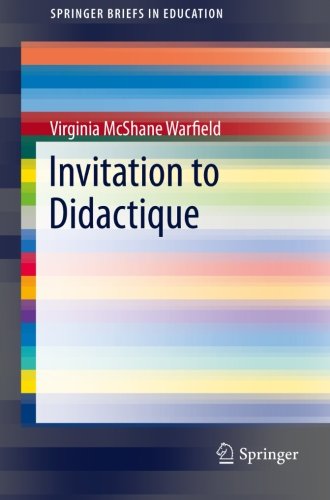

Most ebook files are in PDF format, so you can easily read them using various software such as Foxit Reader or directly on the Google Chrome browser.
Some ebook files are released by publishers in other formats such as .awz, .mobi, .epub, .fb2, etc. You may need to install specific software to read these formats on mobile/PC, such as Calibre.
Please read the tutorial at this link: https://ebookbell.com/faq
We offer FREE conversion to the popular formats you request; however, this may take some time. Therefore, right after payment, please email us, and we will try to provide the service as quickly as possible.
For some exceptional file formats or broken links (if any), please refrain from opening any disputes. Instead, email us first, and we will try to assist within a maximum of 6 hours.
EbookBell Team

4.8
64 reviewsThis is an introduction to a Didactique, research program that has been going on in France since the '70s and whose importance is now widely recognized, but whose content is still not easy access to anglophones. The work of Dr. Guy Brousseau has remained largely, in his native France, untranslated and largely unknown. This book will unlock the secrets of Didactique and provide an opportunity for researchers, teacher educators, and students to learn of this important methodology.
The field of Didactique is rich, deep and extensive. To a large extent, it owes its shape and even its existence to the energy and inspiration poured in by Guy Brousseau starting in the 1960's. Many others have since added their ideas and energies to produce a unique, vibrant, multi-faceted research program. Invitation toDidactique provides an easily accessible general introduction to the field, hitting the high spots and focusing largely on the contributions of Brousseau himself. Teaching Fractions through Situations: a Fundamental Experiment takes one fundamental aspect and examines it in a great deal more depth from several perspectives. It gives a detailed description of a particularly interesting way of teaching fractions and decimals which should be interesting to any reader who enjoys seeing children learn mathematics. It then examines two other aspects of the lesson sequence, first describing the exciting and challenging role of the teachers handling a highly unfamiliar approach and then placing the whole experience in its context in the very earliest phases of the development of this very important field of research.